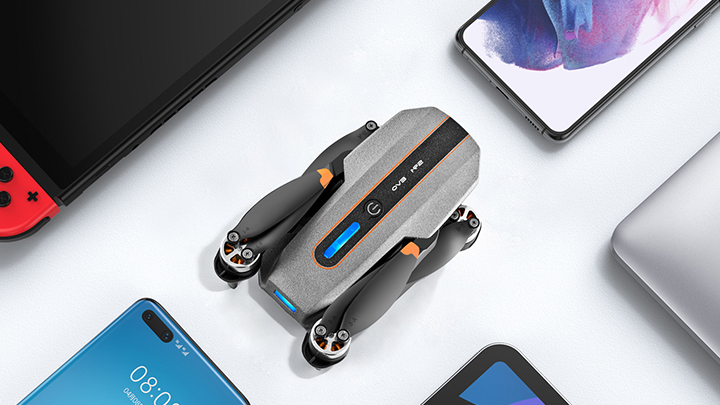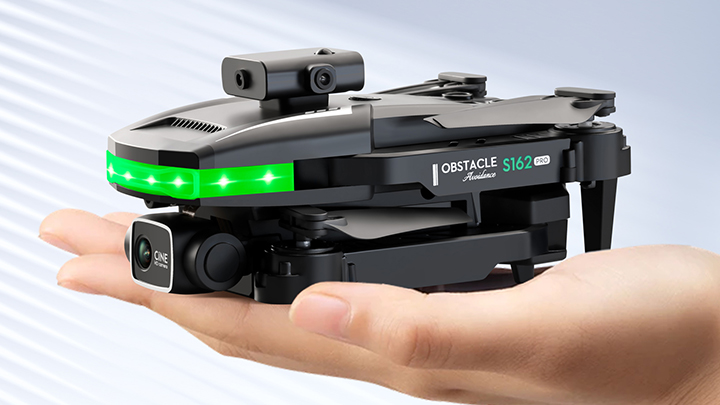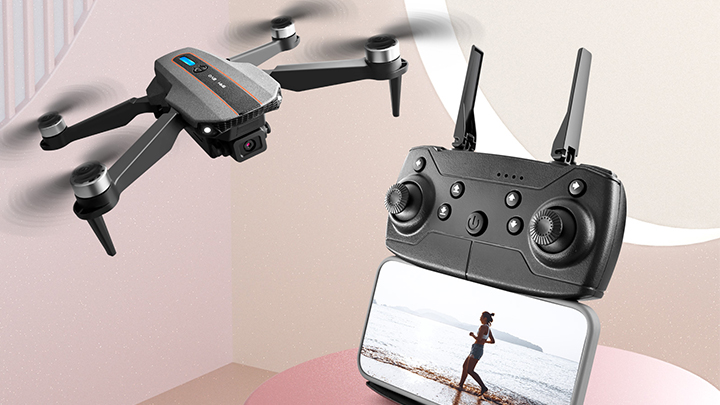How to Choose the Right Drone
Drones have become increasingly popular, not only for recreational use but also for professional applications such as photography, filmmaking, surveying, and delivery services. With so many models and features on the market, selecting the right drone can be overwhelming, especially for beginners. To make an informed decision, it’s essential to consider factors like usage, features, and budget. This guide will help you understand the key points to consider when choosing a drone.
1. Determine Your Purpose
Before diving into specific models, it’s important to define the purpose of your drone. Are you a hobbyist looking for casual flying fun, or are you a professional in need of a drone for work?
- Recreational Use: If you're a beginner or want a drone for casual flying, basic models are often more affordable and user-friendly. These drones are suitable for learning how to fly and capturing fun aerial footage.
- Photography and Videography: If you’re interested in aerial photography or videography, you’ll want a drone equipped with a high-quality camera and stabilization features.
- Commercial Use: Drones are increasingly being used for commercial purposes, such as mapping, surveillance, or delivery. Professional drones are equipped with advanced features like thermal imaging or long-range flying capabilities.
Knowing your purpose will narrow down your options and help you focus on drones with features tailored to your needs.
2. Consider Camera Quality
For those interested in photography or videography, camera quality is a major factor. The drone's camera quality can significantly impact the results you get.
- Resolution: Look for drones with cameras that shoot in at least 1080p HD resolution. For professional use, a drone with 4K or higher resolution is ideal to capture sharp, detailed footage.
- Stabilization: A gimbal is essential for stabilizing the camera during flight, reducing motion blur, and ensuring smooth video capture. Three-axis gimbals provide the best stabilization for high-quality footage.
- FPS (Frames Per Second): For videographers, having a high frame rate, such as 60 FPS or more, allows for smooth motion capture, especially for fast-moving subjects.
3. Flight Time and Battery Life
One of the most critical features to consider when selecting a drone is flight time. Most consumer drones offer flight times ranging from 10 to 30 minutes per battery charge.
- Battery Capacity: Drones with longer battery life give you more flying time, which is especially important for extended shoots or professional tasks. Look for drones with high-capacity batteries that allow for at least 20 minutes of flight.
- Swappable Batteries: Consider drones that allow you to swap out batteries. Purchasing extra batteries can significantly extend your total flying time without needing to wait for recharging.
4. Range and Connectivity
The range of a drone refers to the distance it can fly from the controller while maintaining a strong signal. Drones with better connectivity and longer ranges allow you to explore larger areas.
- Short Range: For indoor or close-range flights, a drone with a range of 100-500 meters is sufficient.
- Long Range: Professional drones offer ranges of 2-10 kilometers or more, allowing for more expansive flying opportunities. Long-range drones are ideal for tasks like landscape photography, surveying, and videography.
- Signal Types: Drones typically use Wi-Fi or radio frequency signals for communication with the controller. More advanced drones use OcuSync or Lightbridge technology, which offer better transmission and stronger signals over long distances.
5. GPS and Autonomous Features
For smoother and more accurate flying, many drones come equipped with GPS and autonomous flying modes. These features are especially helpful for beginners or when performing complex tasks.
- GPS Positioning: Drones with GPS can maintain stable flight patterns, even in windy conditions, and return home automatically when needed. This feature is particularly useful when you lose sight of the drone or if the battery is running low.
- Follow Me Mode: Some drones have a "Follow Me" feature that allows them to automatically track and follow a moving subject. This is great for action shots or sports photography.
- Waypoint Navigation: Advanced drones let you pre-program a flight path by setting waypoints on a map. The drone will autonomously follow the route, making it ideal for surveying and mapping.
6. Obstacle Avoidance and Safety Features
Safety is a critical consideration, especially when flying in crowded or complex environments. Many modern drones are equipped with obstacle avoidance systems and other safety features to prevent accidents.
- Obstacle Sensors: Drones with obstacle avoidance use sensors to detect objects in their flight path and automatically adjust course to avoid collisions. Look for drones with front, rear, and downward-facing sensors for better protection.
- Return to Home: Many drones have a return-to-home (RTH) feature, where the drone automatically returns to its launch point when the battery is low or the signal is lost.
- Geofencing: Some drones come with geofencing features that prevent them from flying into restricted areas, like near airports or government buildings.
7. Portability and Design
Depending on how and where you intend to use the drone, portability might be an important factor. If you plan to travel with your drone, look for models that are compact and lightweight.
- Foldable Design: Many drones now feature foldable arms, making them easy to pack and transport. Foldable drones are ideal for travelers or those who need a drone they can carry with them on the go.
- Durability: Drones used for professional or outdoor activities should be built with sturdy materials like carbon fiber to withstand occasional bumps or crashes.
8. Price and Budget
Drones come in a wide range of prices, from affordable beginner models to high-end professional drones. Understanding your budget will help you narrow down your choices.
- Entry-Level (Under $300): These drones are great for beginners or hobbyists who want a simple flying experience without breaking the bank. They usually have basic cameras and limited range.
- Mid-Range ($300-$1,000): Mid-range drones offer a good balance between quality and features, with better cameras, longer flight times, and more advanced controls. They’re suitable for intermediate users or casual photographers.
- High-End (Over $1,000): High-end drones are designed for professionals and come with premium features like 4K cameras, advanced stabilization, long-range flying, and obstacle avoidance. These drones are best for serious photographers, filmmakers, or commercial users.
9. Legal Requirements and Certifications
Before purchasing and flying a drone, make sure you’re aware of the legal requirements in your region. In many countries, drones over a certain weight must be registered, and pilots may need to obtain a certification to fly.
- Drone Registration: In some areas, drones that weigh over 250 grams must be registered with local aviation authorities.
- Pilot Certification: For commercial use or flying in certain areas, you may need to pass a drone pilot certification test.
Conclusion
Choosing the right drone depends on your intended use, budget, and the features you need. Whether you’re a beginner looking for a simple, fun flying experience or a professional needing high-end features, there’s a drone for everyone. By considering factors such as camera quality, flight time, range, and safety features, you can select the perfect drone to suit your needs.



